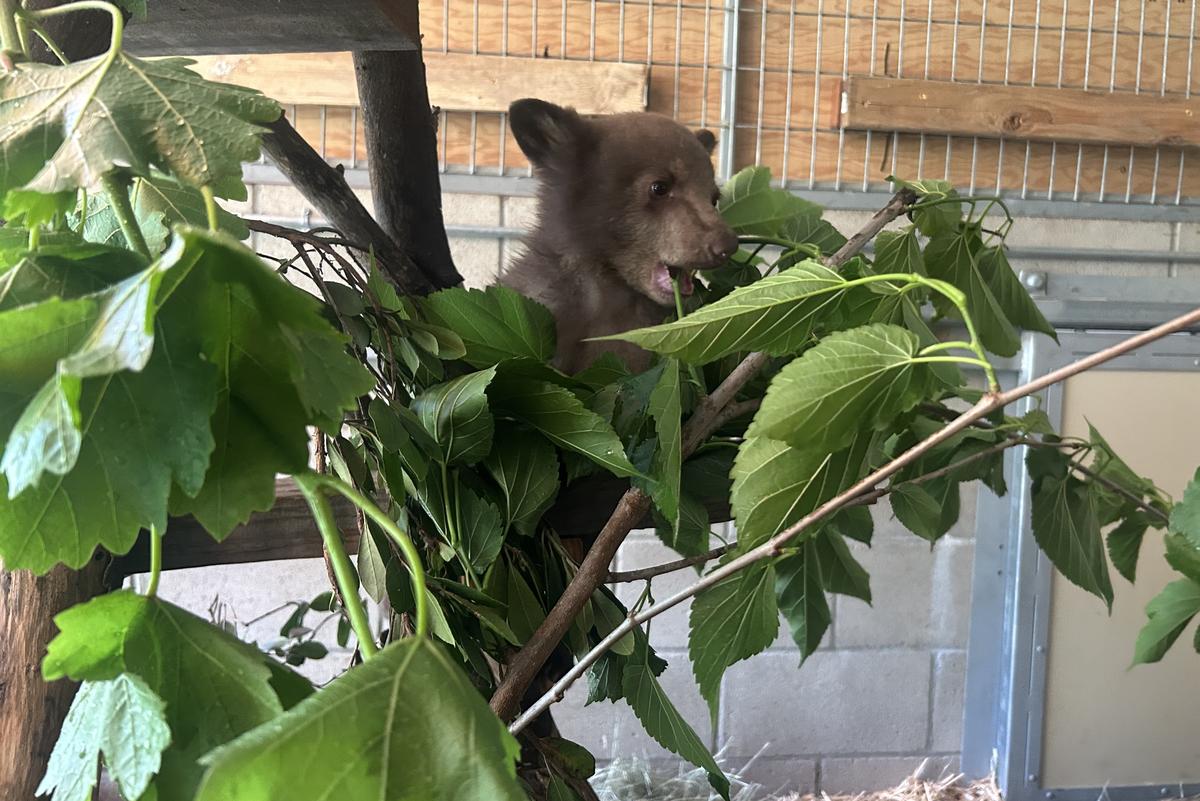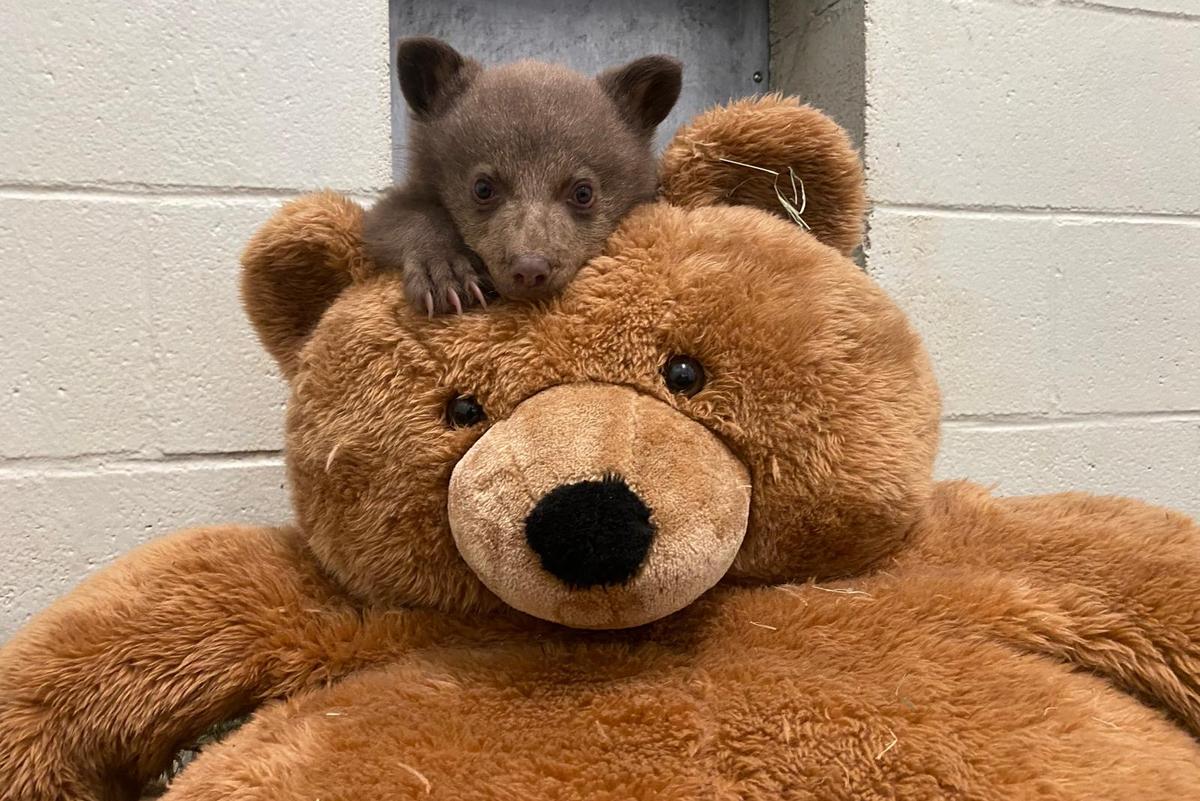Ramona, California —(Map)
When hikers in California came across a young bear cub crying on a trail last month, they knew they had to help. It was a rough start for the tiny bear, but now he’s safe, healthy, and growing fast. In a year or so, he may be ready to return to the wild.
On April 12, a group of campers in a California forest heard a crying noise. They discovered a small black bear cub that was all alone.
The California Department of Fish and Wildlife kept an eye on the cub. When the mother didn’t return, they took the bear to the Ramona Wildlife Center, which is run by the San Diego Humane Society. The center specializes in helping wild animals.

(Source: San Diego Humane Society.)
When the cub arrived, he was in bad shape. He was 2 to 3 months old, and he hadn’t eaten in several days. Workers at the center weren’t sure the cub would survive.
But they did what they could. They looked after him constantly, feeding him several times a day, and even at night.
The cub didn’t like being fed with a bottle, so workers began giving him milk in a bowl. Soon he began to improve and put on weight. He’s now nearly 10 pounds (4.5 kilograms) heavier than when he arrived.

(Source: San Diego Humane Society.)
“It’s been amazing just watching him grow and learn,” said Autumn Welch, who’s in charge of wildlife operations at the center.
To help the cub learn to survive in the wild, the workers are trying to keep him as wild as possible. That means they can’t let him get used to humans.
So when the workers are around the cub, they wear costumes, like a bear mask and a big bear coat. They wear thick gloves, and try to avoid letting the bear see or smell their skin. They even try to make the costumes smell like a real black bear.

(Source: San Diego Humane Society.)
Workers at the center are trying to teach the cub the skills he’ll need to live on his own. They’ve set up an indoor and outdoor area for the cub to live in and explore. They’ve made the areas as natural as possible, and included structures made of tree branches that the cub likes to climb.
The workers spend 60 to 90 minutes a day playing with the young bear. They do things that a mother bear might do, like teaching him how to dig up insects for food. They hide acorns, which the cub finds by smell and then eats.

(Source: San Diego Humane Society.)
The workers also play with him using teddy bears. “He will grab out, bite and wrestle,” says Ms. Welch. “These stuffed animals really do help.” The baby bear even goes to sleep with a large, stuffed bear.
Now that the cub is older and bigger, he’s eating more solid food, like fruit and dried pet food. He also eats insects, grass, and leaves.
The cub is still young, but he’s learning and growing quickly. The center hopes the cub can be set free in the wild in about a year.
😕
This map has not been loaded because of your cookie choices. To view the content, you can accept 'Non-necessary' cookies.
